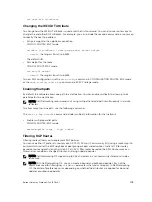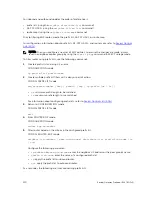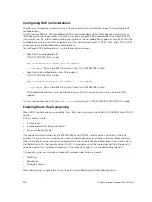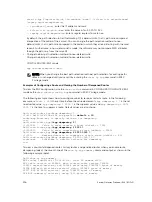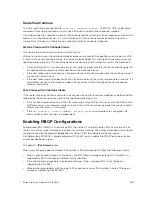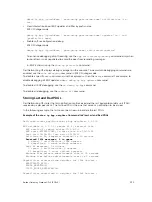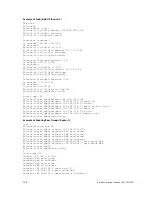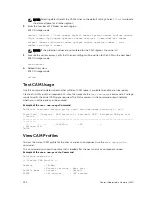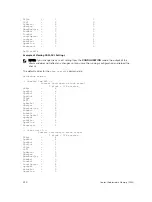
00000000 00000000
00000000 00000001 0181a1e4 0181a25c 41af9400 00000000
PDU[2] : len 19, captured 00:34:51 ago
ffffffff ffffffff ffffffff ffffffff 00130400
PDU[3] : len 19, captured 00:34:51 ago
ffffffff ffffffff ffffffff ffffffff 00130400
PDU[4] : len 19, captured 00:34:22 ago
ffffffff ffffffff ffffffff ffffffff 00130400
[. . .]
Outgoing packet capture enabled for BGP neighbor 20.20.20.2
Available buffer size 40958758, 27 packet(s) captured using 562 bytes
PDU[1] : len 41, captured 00:34:52 ago
ffffffff ffffffff ffffffff ffffffff 00290104 000100b4 14141401 0c020a01
04000100 01020080
00000000
PDU[2] : len 19, captured 00:34:51 ago
ffffffff ffffffff ffffffff ffffffff 00130400
PDU[3] : len 19, captured 00:34:50 ago
ffffffff ffffffff ffffffff ffffffff 00130400
PDU[4] : len 19, captured 00:34:20 ago
ffffffff ffffffff ffffffff ffffffff 00130400
[. . .]
The following example shows how to view space requirements for storing all the PDUs. With full internet
feed (205K) captured, approximately 11.8MB is required to store all of the PDUs.
Dell(conf-router_bgp)#do show capture bgp-pdu neighbor 172.30.1.250
Incoming packet capture enabled for BGP neighbor 172.30.1.250
Available buffer size 29165743, 192991 packet(s) captured using
11794257 bytes
[. . .]
Dell(conf-router_bgp)#do sho ip bg s
BGP router identifier 172.30.1.56, local AS number 65056
BGP table version is 313511, main routing table version 313511
207896 network entrie(s) and 207896 paths using 42364576 bytes of memory
59913 BGP path attribute entrie(s) using 2875872 bytes of memory
59910 BGP AS-PATH entrie(s) using 2679698 bytes of memory
3 BGP community entrie(s) using 81 bytes of memory
Neighbor AS MsgRcvd MsgSent TblVer InQ OutQ Up/Down State/Pfx
1.1.1.2 2 17 18966 0 0 0 00:08:19 Active
172.30.1.250 18508 243295 25 313511 0 0 00:12:46 207896
PDU Counters
Dell Networking OS supports additional counters for various types of PDUs sent and received from
neighbors.
These are seen in the output of the
show ip bgp neighbor
command.
Sample Configurations
The following example configurations show how to enable BGP and set up some peer groups. These
examples are not comprehensive directions. They are intended to give you some guidance with typical
configurations.
To support your own IP addresses, interfaces, names, and so on, you can copy and paste from these
examples to your CLI. Be sure that you make the necessary changes.
Border Gateway Protocol IPv4 (BGPv4)
223
Summary of Contents for Z9000
Page 1: ...Dell Configuration Guide for the Z9000 System 9 7 0 0 ...
Page 80: ...grub reboot 80 Management ...
Page 128: ... 0 Te 1 1 Te 1 2 rx Flow N A N A 128 Access Control Lists ACLs ...
Page 491: ...Figure 70 Configuring OSPF and BGP for MSDP Multicast Source Discovery Protocol MSDP 491 ...
Page 496: ...Figure 73 MSDP Default Peer Scenario 1 496 Multicast Source Discovery Protocol MSDP ...
Page 497: ...Figure 74 MSDP Default Peer Scenario 2 Multicast Source Discovery Protocol MSDP 497 ...
Page 498: ...Figure 75 MSDP Default Peer Scenario 3 498 Multicast Source Discovery Protocol MSDP ...
Page 760: ...Figure 100 Single and Double Tag TPID Match 760 Service Provider Bridging ...
Page 761: ...Figure 101 Single and Double Tag First byte TPID Match Service Provider Bridging 761 ...

